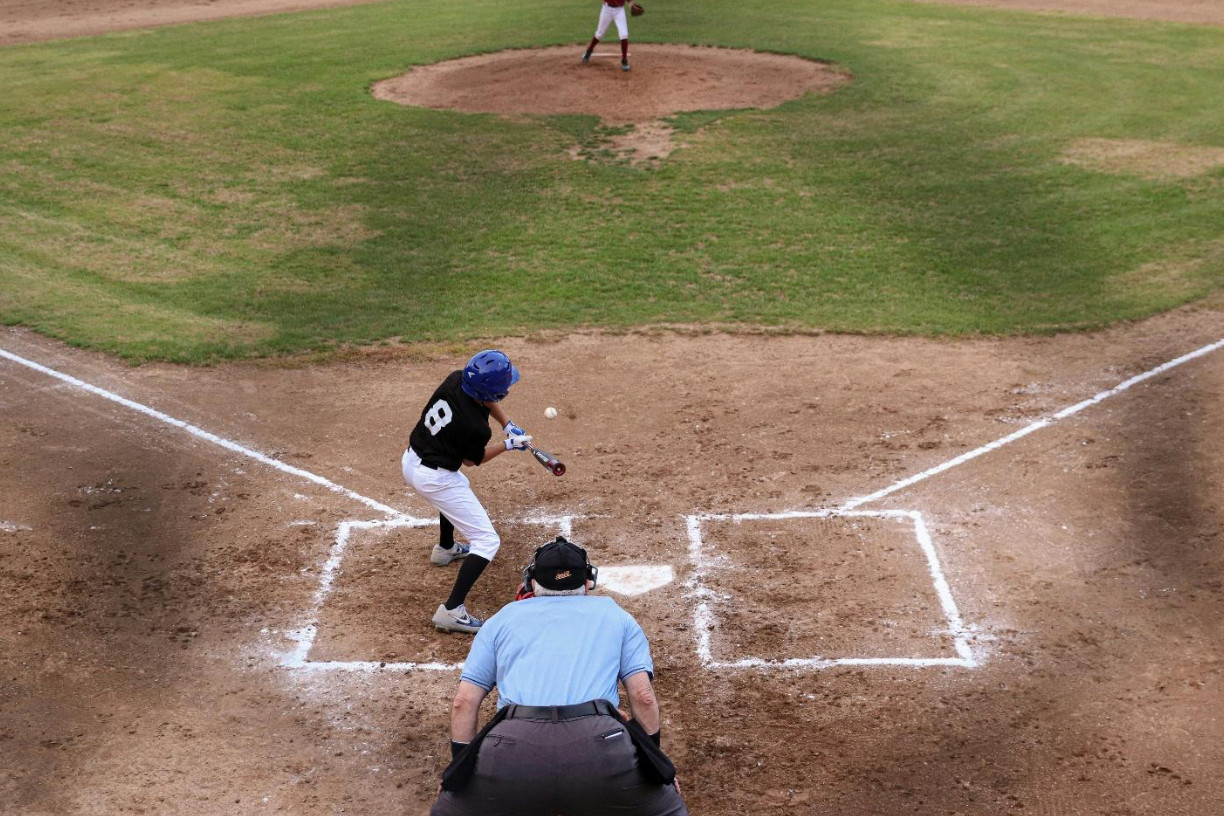How Much Do Minor League Baseball Players Make in 2025? A Complete Salary Breakdown
Contents
- How Much Do Minor League Baseball Players Make in 2025? A Complete Salary Breakdown
- Survival Over Success in Early Days to Steady Improvements
- Life in the Minors: Challenges on a Rough Road to Achievement
- Seasonal Rigors: A Taxing Process
- The Struggle with Money: Hardly Making It
- Top Prospects vs. the Remainder of Players: Inequality in Compensation
- The Emotional and Mental Impact
- Overcoming Adversity
- It’s 2025, So How Much Do Minor League Baseball Players Make?
- Reaching the MLB
- Top Pay in the Minor Leagues: Dissecting the Highest-Earning Payers
- How MLB and MiLB Pay Compare
- The Signing Bonus Significance
- Future Implications
- The Effects of Pay Changes
- Pros and Cons of Playing Minor League Baseball
- The Significance of Minor League Baseball Salaries Issue
- Frequently Asked Questions
Recomended bookmakers
KEY TAKEAWAYS:
- Players in minor league baseball hardly made enough money to support their basic living needs during a large portion of the sport’s history.
- Financial difficulties especially worsen during the off-season.
- Top prospects and the vast majority of lower league players are very different in a way that the former group of players frequently receive signing bonuses totaling millions of dollars.

Photo: A young baseball player is getting ready to hit at the plate (source: https://unsplash.com/photos/a-batter-catcher-and-umpire-during-a-baseball-game-v7BKwQdSxx4)
In a comparatively short period of time, minor league baseball players have seen significant changes.
The compensation that MiLB players receive for their efforts on the diamond is arguably the most significant improvement in playing circumstances, including housing and nutrition. These modifications have repercussions and enable players across the nation to play professional baseball and sustain the MLB dream for extended periods of time.
Players in minor league baseball hardly made enough money to support their basic living needs during a large portion of the sport’s history. The MLB’s system was intended to find and develop talent in the MiLB, but players’ struggles with money frequently eclipsed their aspirations to be the best.
Survival Over Success in Early Days to Steady Improvements
Minor league players were paid irregularly in the early 20th century and frequently had to work off-season jobs to make ends meet. Players were expected to pay for their own accommodation, meals, and transportation, and pay discrepancies were prevalent. As a result, only those with more financial assistance were able to endure long enough to establish themselves.
Minor league players’ predicament started to garner greater attention during the late 2010s. In 2019, rookie-level players made a pittance of US$290 a week, or US$3,480 a year. Triple-A (officially called Class AAA; it’s the top tier in the minor league system, just below MLB) athletes did somewhat better, earning US$11,044 a year. Because there were no housing or food stipends, athletes had to make the most of their meager earnings.
Before we come to the bottom line of our piece, which is the current salaries, let’s see what life in the minor leagues is like…
Life in the Minors: Challenges on a Rough Road to Achievement
Although there have been notable improvements, minor league life is still a difficult and uncertain experience. Players who aspire to play in the major leagues face a demanding schedule, fierce competition, and little job security. Even though minor league baseball salaries have increased recently, most players still struggle financially and physically.
Seasonal Rigors: A Taxing Process
The minor league season is a test of stamina, since it involves lengthy trips that are frequently made in uncomfortable buses. Minor league teams travel via regional leagues on bus trips that might extend for hours or even overnight, in contrast to the major leagues, where players travel on chartered aircraft. Players frequently have little time to recover between games due to this demanding travel schedule, which raises their risk of exhaustion and injury.
This is made worse by the season’s extreme intensity. With 120–140 games every season, minor league clubs don’t have much time for relaxation or personal time. The pressure to perform is ever-present for players. A few poor performances or a prolonged slump may result in a demotion or, worse, the termination of their professional careers.
For prospects, the stakes are particularly high because they are competing to defend their teams’ investment in addition to battling for their own future. Every game is an opportunity to demonstrate that they are deserving of a place on the vaunted MLB roster.
The Struggle with Money: Hardly Making It
Even though there have been some obvious improvements to the MiLB compensation structure, most players’ incomes still fall well short of what they need to live comfortably. Even though the current salary situation is a big improvement over the pitiful pay of only a few years ago, these payments pale in comparison to MLB players’ rich contracts.
Financial difficulties also worsen during the off-season. During inactive periods in December and January, when teams aren’t allowed to contact players, they don’t receive offers. Training camp participants are frequently paid only $250 a week to exercise at home, even during the busy offseason. In order to pay for living expenses, many people must take up part-time employment, like coaching or retail work, due to their low salaries.
Players who don’t have family support or large signing bonuses may find these financial realities too much to handle. Because minor league baseball pay isn’t meant to sustain a pleasant lifestyle, many players are forced to make compromises and use innovative budgeting. Although housing is now covered throughout the season, most players still have to pay for it out of pocket during the offseason.
Top Prospects vs. the Remainder of Players: Inequality in Compensation
Top prospects and the vast majority of lower league players are very different pay-wise. First-round draft selections and well-known foreign signees frequently receive signing bonuses totaling millions of dollars, giving them a safety net. Most lower league players, on the other hand, depend entirely on their pay, which is frequently insufficient to cover even the most basic expenses.
For instance, a rookie-level player is making around US$3,000 per month, whereas a top-tier prospect would be earning six figures. These glaring disparities highlight the system’s ongoing financial disparities despite rising wages. We’ll get to individual record incomes later on.
The Emotional and Mental Impact
Living off of a minor league baseball income and putting up with a demanding schedule presents more than just financial and physical difficulties.
Players frequently experience extreme emotional and mental stress. They constantly worry about their prospects, since they are aware that their careers could be derailed at any time by injuries or subpar work. Adding loneliness to the list of difficulties, many people also spend a lot of time apart from friends and family.
Overcoming Adversity
The desire to play in the Major Leagues keeps minor league players going in spite of these obstacles. Resilience, flexibility, and an unrelenting dedication to the sport they love are necessary for their journey. With the minimum MLB salary of US$760,000 providing a sharp contrast to their MiLB wages, the financial and emotional rewards for those who do make it to the major leagues can be transformative.
The minors’ life narrative is one of sacrifice, perseverance, and resolve. Many players see the battle as a necessary step toward realizing their dreams, even though the route is obviously difficult, since they know that the final reward is worth the effort. Although minor league baseball salaries have increased, most prospective sportsmen still have a long way to go before they can achieve financial and professional stability.
Now, let’s talk just about the money…
It’s 2025, So How Much Do Minor League Baseball Players Make?
How much do minor league baseball players make in 2025, then?
The stark contrast between the numbers and benefits offered to players in 2019 and 2025 may be seen below.
| Weekly salaries | |||
|---|---|---|---|
| 2019 | 2021 | 2025 | |
| Rookie-level | $290 | $400 | $700 |
| Low-A | $290 | $500 | $870 |
| High-A | $290 | $500 | $920 |
| Double-A | $350 | $600 | $1,020 |
| Triple-A | $502 | $700 | $1,225 |
| Spring training | $0 | $0 | $650 |
| Offseason camp | $0 | $0 | $650 |
| *Offseason at home | $0 | $0 | $255 |
| Minimum annual salary | |||
| 2019 | 2021 | 2025 | |
| Rookie-level | $3,480 | $4,800 | $20,430 |
| Low-A | $6,380 | $11,000 | $26,840 |
| High-A | $6,380 | $11,000 | $27,940 |
| Double-A | $7,700 | $13,800 | $30,905 |
| Triple-A | $11,044 | $17,500 | $36,590 |
During the so-called “dead period”, which is an inactive season period and occurs between December and January, when their organizations are unable to contact them, players aren’t paid.
| Not provided | Not provided | Provided by the team | |
|---|---|---|---|
| In-season housing | Not provided | Not provided | Provided by the team |
| Transportation to the stadium | Not provided | Not provided | Provided by the team |
| Travel | One bus | Two buses | Two buses |
| Meals | Not provided | Two meals per day | Two meals per day |
| Daily per diem | $25 | $25 | $31.50 |
| Name, image, and likeness | Rights retained by teams | Rights retained by teams | Controlled by the player |
| Health insurance | Ends on the day the player is released | Ends on the day the player is released | Continues for two-three months after release |
Reaching the MLB
Making the transition from the minor levels to MLB can have a profound impact on one’s career and finances. The minimum wage for a rookie joining Major League Baseball is, as said, $760,000 per year, which is significantly better than Triple-A’s maximum salary of $36,590.
The appeal of the big leagues is highlighted by this financial surge. If handled properly, reaching the MLB can provide minor leaguers with a lifetime of security.
Top Pay in the Minor Leagues: Dissecting the Highest-Earning Payers
A small number of minor league baseball players make far more than their peers, which makes headlines and draws attention to the inequities in the system, even though the average income is far from glamorous. Players with enormous promise, foreign recruits with large signing bonuses, or players with Major League Baseball experience, who are held in the minor leagues for team depth, are frequently among these top earners.
According to reports, the highest-paid minor league player in 2024 made US$500,000 a year. Even though these numbers are striking, they only reflect a small portion of minor league players who earn high salaries. Let’s mention some of these high earners:
- #5 Marco Luciano (Dominican Republic, shortstop, San Francisco Giants, US$350,000)
- #4 Bobby Miller (USA, pitcher, Los Angeles Dodgers, US$375,000)
- #3 Eury Pérez (Dominican Republic, pitcher, Miami Marlins, US$400,000)
- #2 Grayson Rodriguez (USA, pitcher, Baltimore Orioles, US$450,000)
- #1 Jasson Domínguez (Dominican Republic, outfielder, New York Yankees, US$500,000)
How MLB and MiLB Pay Compare
For comparison, the 2024 minimum wage for a Major League Baseball player was $760,000, which is more than 20 times the highest reported salary in minor league baseball. A player’s financial situation changes drastically when they make the transition from the minor leagues to the major leagues. Reaching the MLBs, however, is still a long way off for the great majority of minor league players.
The Signing Bonus Significance
Many elite minor league players receive sizable signing bonuses in addition to their pay, which greatly increases their income. For instance, in 2019, Jasson Domínguez was given a signing bonus of $5.1 million. Or, when Marco Luciano joined the Giants, he received a $2.6 million bonus.
Until a player enters the major leagues, these incentives are frequently their main source of income, underscoring the financial difficulties encountered by those who don’t receive such windfalls.
Future Implications
The existence of highly compensated MiLB athletes begs the question of systemic inequities. Many believe that as the league works to improve minor league baseball salaries, the disparity between high-paid and low-paid players will close, resulting in a fairer system that compensates all players for their efforts.
The experiences of these high earners highlight the difficulties and disparities that persist throughout the lower levels, as well as the possible benefits of making it to the major levels.
The Effects of Pay Changes
The impact of the wage reforms has been extensive in the following ways:
- Nicer quality of life: Players who earn more money can buy nicer training stuff, housing, and food.
- Longer careers: Players are now more likely to stay in the system for a longer period of time, which increases their chances of making it to MLB.
- Attracting talent: Young athletes now find minor league baseball to be a more alluring career route as a result of the adjustments.
Pros and Cons of Playing Minor League Baseball
| PROS | CONS |
| It gives players a platform to refine their skills and get experience in a professional environment. | Minor league pay is much lower than major league salaries and can be tough to survive on. |
| It acts as an avenue for athletes to move towards the main leagues. | Players may encounter harsh living arrangements, including poor housing and transport conditions. |
| Players in minor leagues are paid, though not as much as those in major leagues. | Travel plans for minor league teams can be taxing, and they frequently travel far. |
| Players acquire important experience traveling, performing in front of an audience, and interacting with teammates and coaches. |
The Significance of Minor League Baseball Salaries Issue
The priority put on developing the next-gen of MLB players is reflected in the minor league baseball wage structure, which goes beyond simple financial considerations. Even though the recent adjustments are praiseworthy, the system can still be improved, especially in terms of offseason assistance and reducing the gap between minor league and major league salaries. MiLB players find various ways to put an extra income into their pockets, some of which are illegal, too. For example, after it was discovered that the Venezuelan utility player Tucupita Marcano was betting on baseball using one of the sportsbooks that allow placing a bet in dollars in 2024, which is against league regulations, MLB banned him from the game for life. Even though we speculate, that might be the result of his recent joining of MLB after years of playing in lower leagues for a pay that was far from ideal.
The development of minor league baseball wage revisions will continue to be crucial in determining the direction of America’s favorite sport as the 2024 season progresses. The path to MLB, from the Rookie Leagues to Triple-A, is still one of tenacity, willpower, and aspirations.






